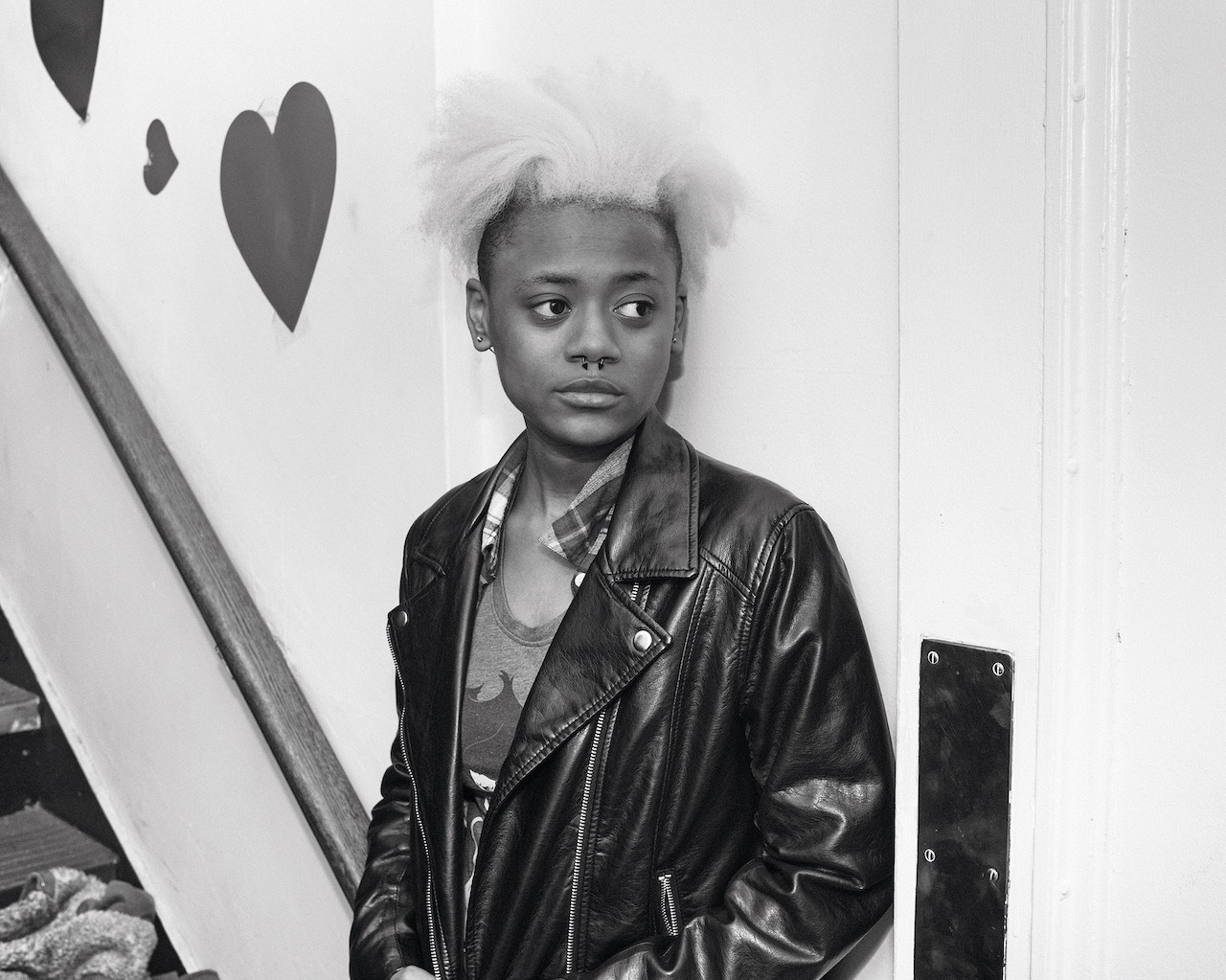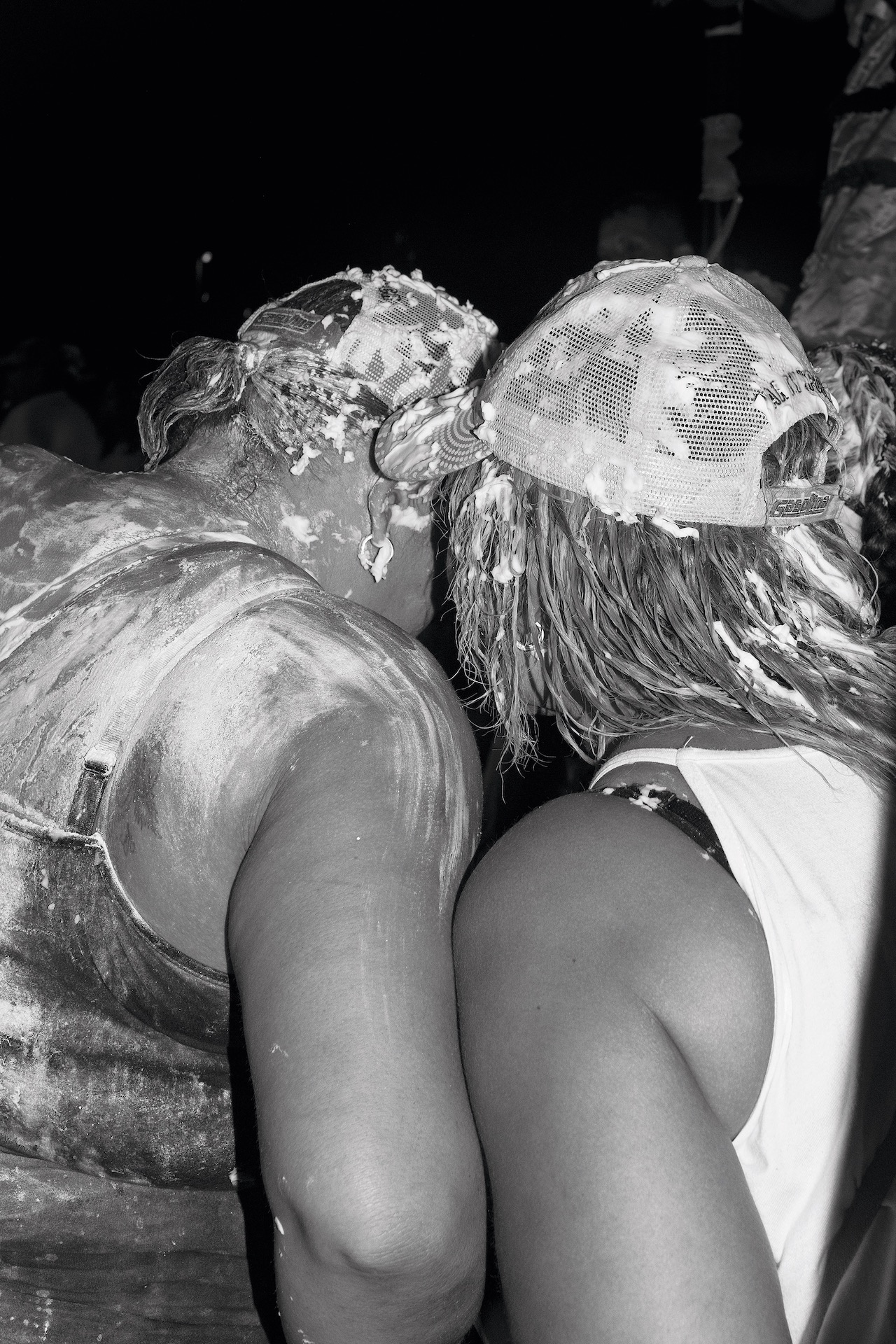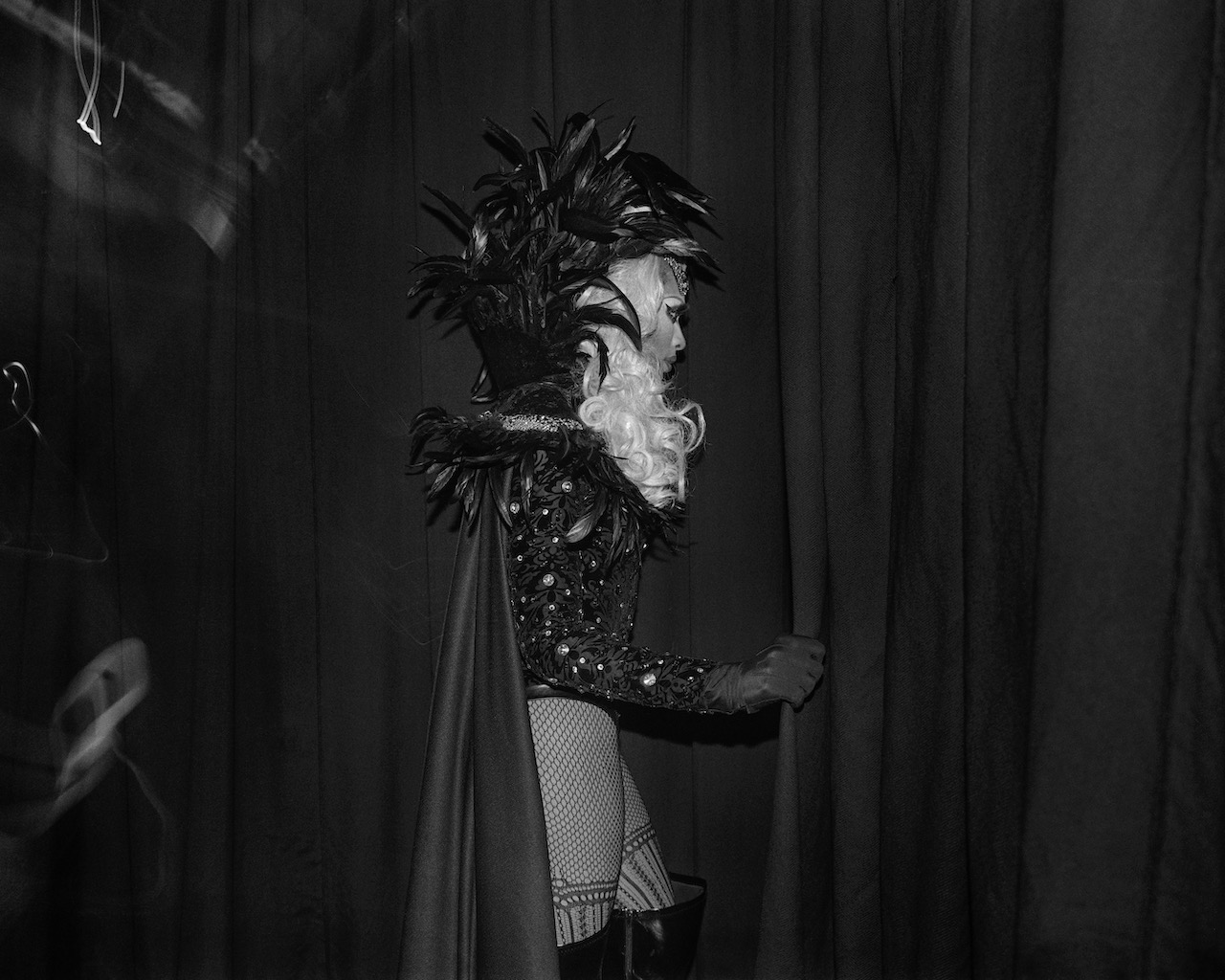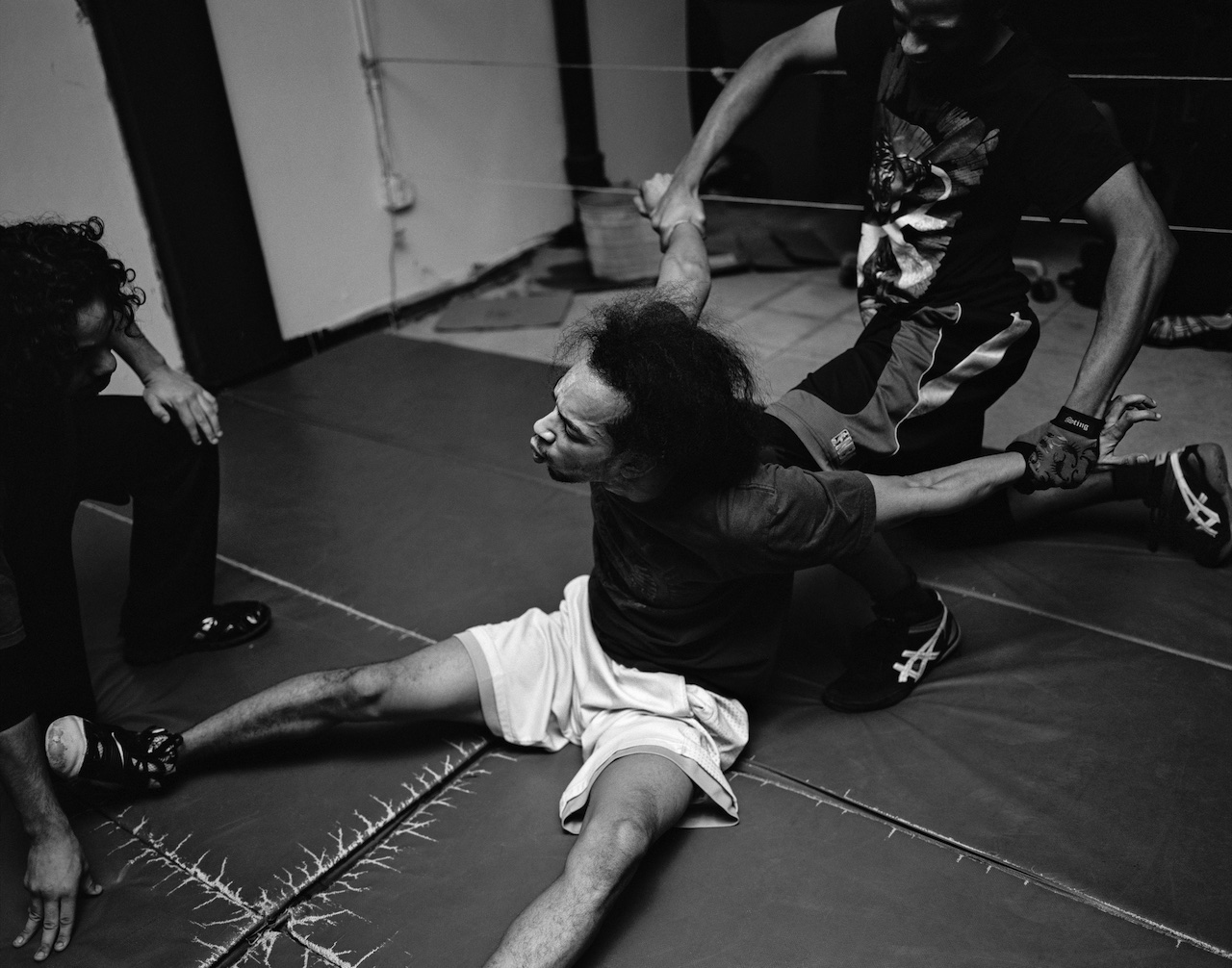All images © Elle Pérez.
For Perez, nightlife became a unifier, not just a subject of interest. As it was for many queer people, it also became part of their identity formation
“Some will say that all we have are the pleasures of this moment, but we must never settle for that minimal transport,” writes José Esteban Muñoz in Cruising Utopia: The Then and There of Queer Futurity (2009). “We must dream and enact new and better pleasures, other ways of being in the world, and ultimately new worlds.”
This readiness for an alternate future is at the heart of Elle Pérez’s work. Instead of dividing their practice into projects, their oeuvre is a continuum of images deeply invested in love and community.
Pérez grew up in the Bronx among members of the Puerto Rican diaspora. At 12, they became involved in the local punk scene, making flyers for a local venue to gain free entry to gigs. It wasn’t long before Pérez started working at that venue, booking and photographing the shows.
“I started focusing on the crowd, looking at the relationships and trying to capture the energy of what it felt like to be young,” Pérez explains. “The dramas, the sweat, who was getting together, who was breaking up – all of the visceral physical dramatics held within this one space were really attractive to me.”
Over time, the work expanded to other underground spaces and touchpoints for the diaspora, including nightclubs, ballrooms and illegal amateur wrestling shows.
Nightlife became a unifier, not just a subject of interest. As it was for many queer people, it also became part of Pérez’s identity formation. Their portraits of Latino, Black and Queer life are made with such care that they move beyond the candid moment and occupy a more formal and timeless space.
Yet it’s the subtle observations that are more pertinent. In visceral details, such as worn door frames, well-trodden stairwells, sweat glistening on the walls, we witness the materiality embedded with the evidence of life.
Together the images illustrate a site of beauty in the face of years of exclusion and trauma. Always shooting in black- and-white, Pérez utilises the rhetoric of historical and documentary images to force inclusion. It is a documentation of a community that rarely exists in dominant histories.
While the location is important, it’s the people and experiences that are most potent for Pérez. The work animates the intimacy between people – the individual and the collective – that proposes a true sense of home.




